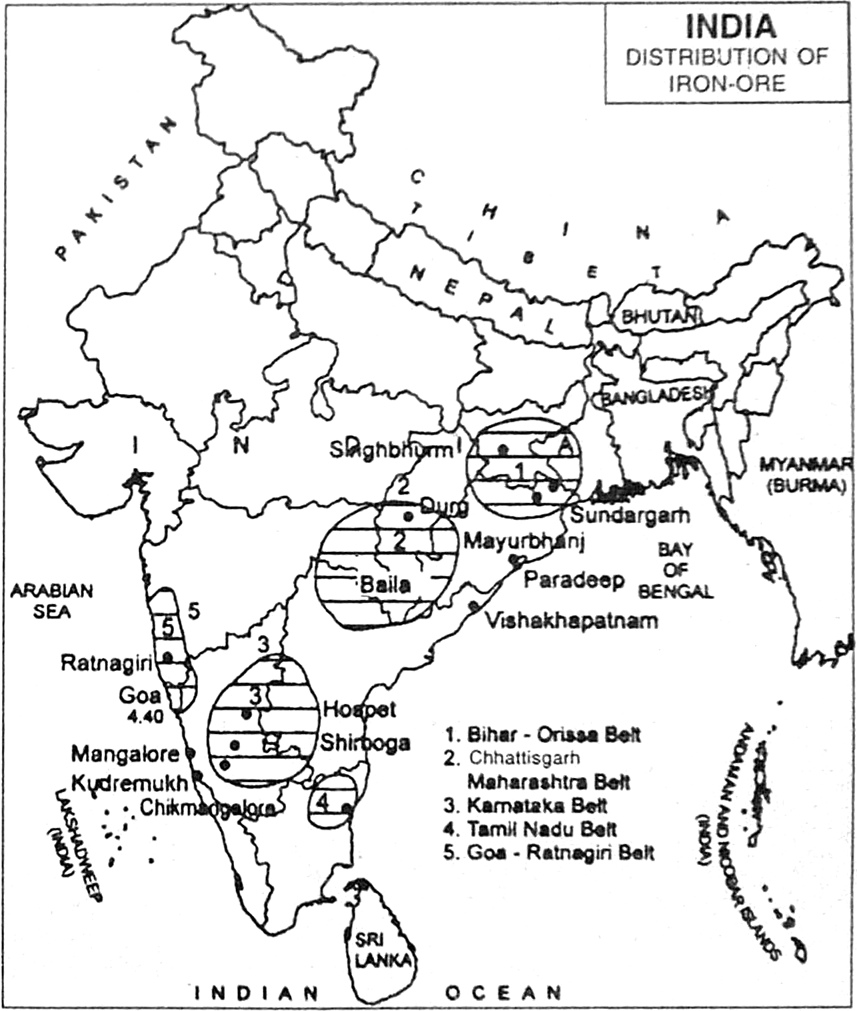Define ‘Bio-energy’. State the of significance of Bio-energy.
Bio-energy refers to energy derived from biological products which includes agricultural residues, municipal, industrial and other wastes.
Explain the distribution of coal in India.
Coal occurs in rock sequences mainly of two geological ages, namely Gondwana and tertiary deposits.
(i) About 80 per cent of the coal deposits in India is of bituminous type and is of non-coking grade. The most important Gondwana coal fields of India are located in Damodar Valley They lie in Jharkhand-Bengal coal belt and the important coal fields in this region are Raniganj, Jharia, Bokaro, Giridih, Karanpura. Jharia is the largest coal field followed by Raniganj. The other river valleys associated with coal are Godavari, Mahanadi and Sone.
(ii) The most important coal mining centres are Singrauli in Madhya Pradesh (part of Singrauli coal field lies in Uttar Pradesh), Korba in Chhattisgarh, Talcher and Rampur in Orissa, Chanda–Wardha, Kamptee and Bander in Maharashtra and Singareni and Pandur in Andhra Pradesh.
(iii) Tertiary coals occur in Assam, Arunachal Pradesh, Meghalaya and Nagaland. It is extracted from Darangiri, Cherrapunji, Mewlong and Langrin (Meghalaya); Makum, Jaipur and Nazira in upper Assam, Namchik – Namphuk (Arunachal Pradesh) and Kalakot (Jammu and Kashmir).
(iv) Besides, the brown coal or lignite occur in the coastal areas of Tamil Nadu, Pondicherry, Gujarat and Jammu and Kashmir
Explain the distribution of iron ore in India.
Most of the India’s iron ore is found in peninsular plateau, almost in all the states of the plateau.
Karnataka : It ranks first in the production of iron ore. The major iron ore fields are
(i) Hospet in Bellari district, (ii) Bababudan hills, (iii) Kalahandi and Kamangudi in Chickmaglur district. It is also found in Chitradurga, Shimoga and Tumkur districts.
Chhattisgarh : It occupies second place contributing about 22.2% of the total out put. The major fields are Bailadila in Bastar. Dalli, Rajhera in Durg district, Rajgarh, Bilaspur and Sarguja districts.
Orissa : It is found in Keonjhar, Mayurbhanj, Sambalpur, Cuttak and Sundargarh.
Goa : It occupies forth place in production of iron ore.
Jharkhand : It is the fifth largest producer of iron ore. Main fields are in Noamandi and, Singhbhum, Gurmahg-hani and Badampahar. Other fields are Dhanbad, Hazaribagh, Santhal , Pargana and Ranchi.
Maharashtra : Ratnagiri and Bhandara are main fields of Maharashtra.
Tamil Nadu : Salem and N. Arcot, Trichirapalli are the main fields. In Andhra Pradesh, Kurnul, Guntur, Cuddaprah, Nellore etc. are the main fields.

What is solar energy ? Describe the two effective processes to tap solar energy.
